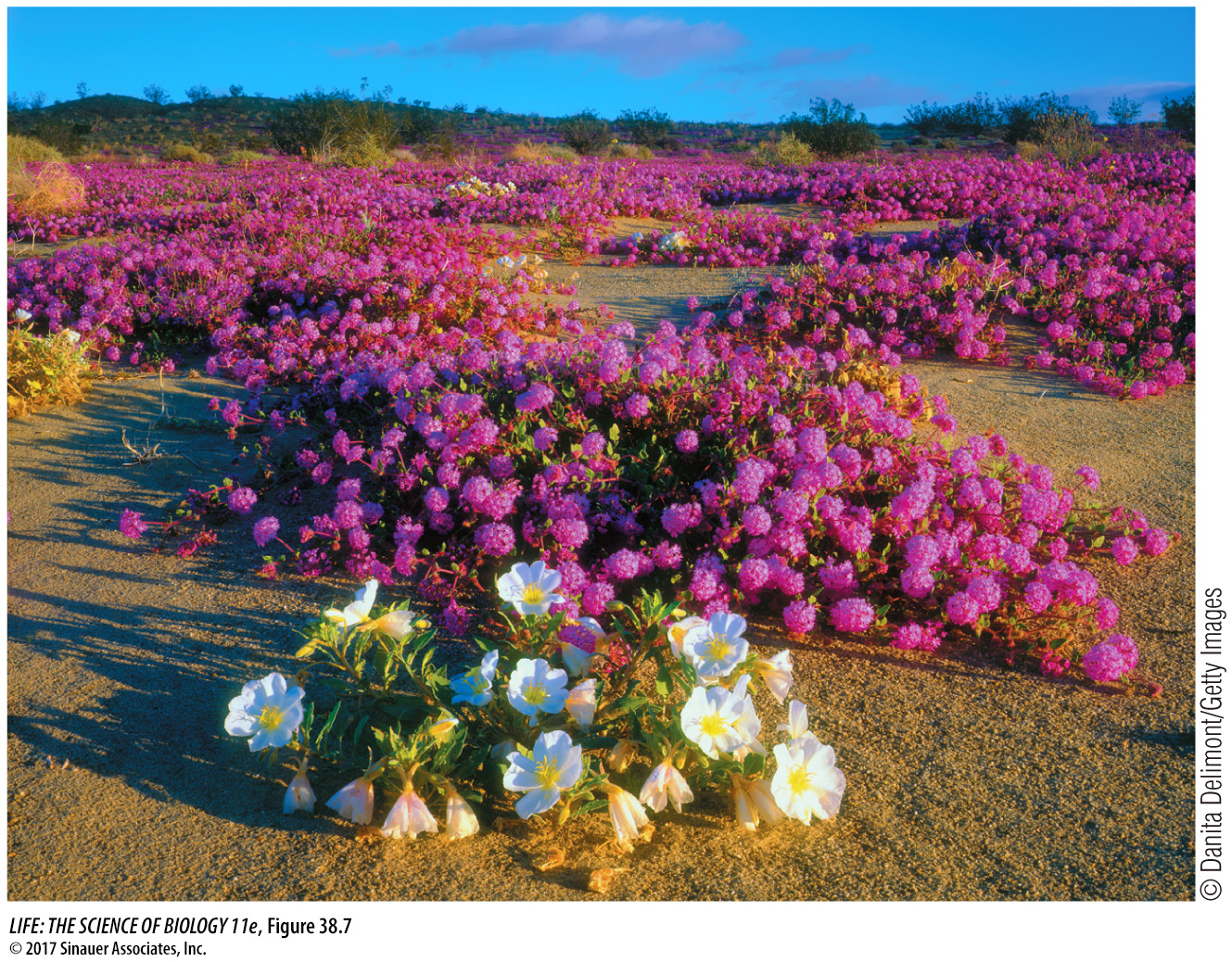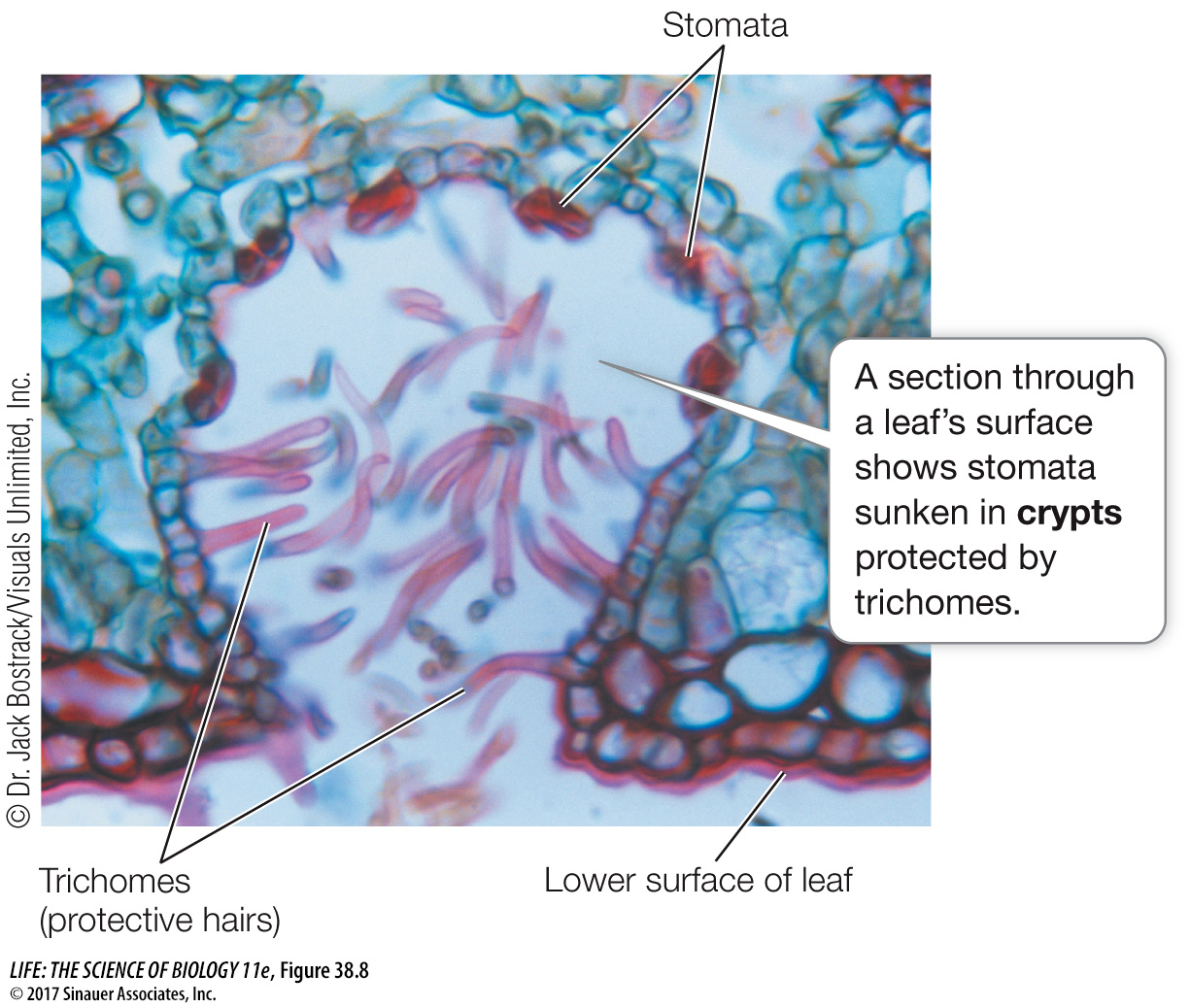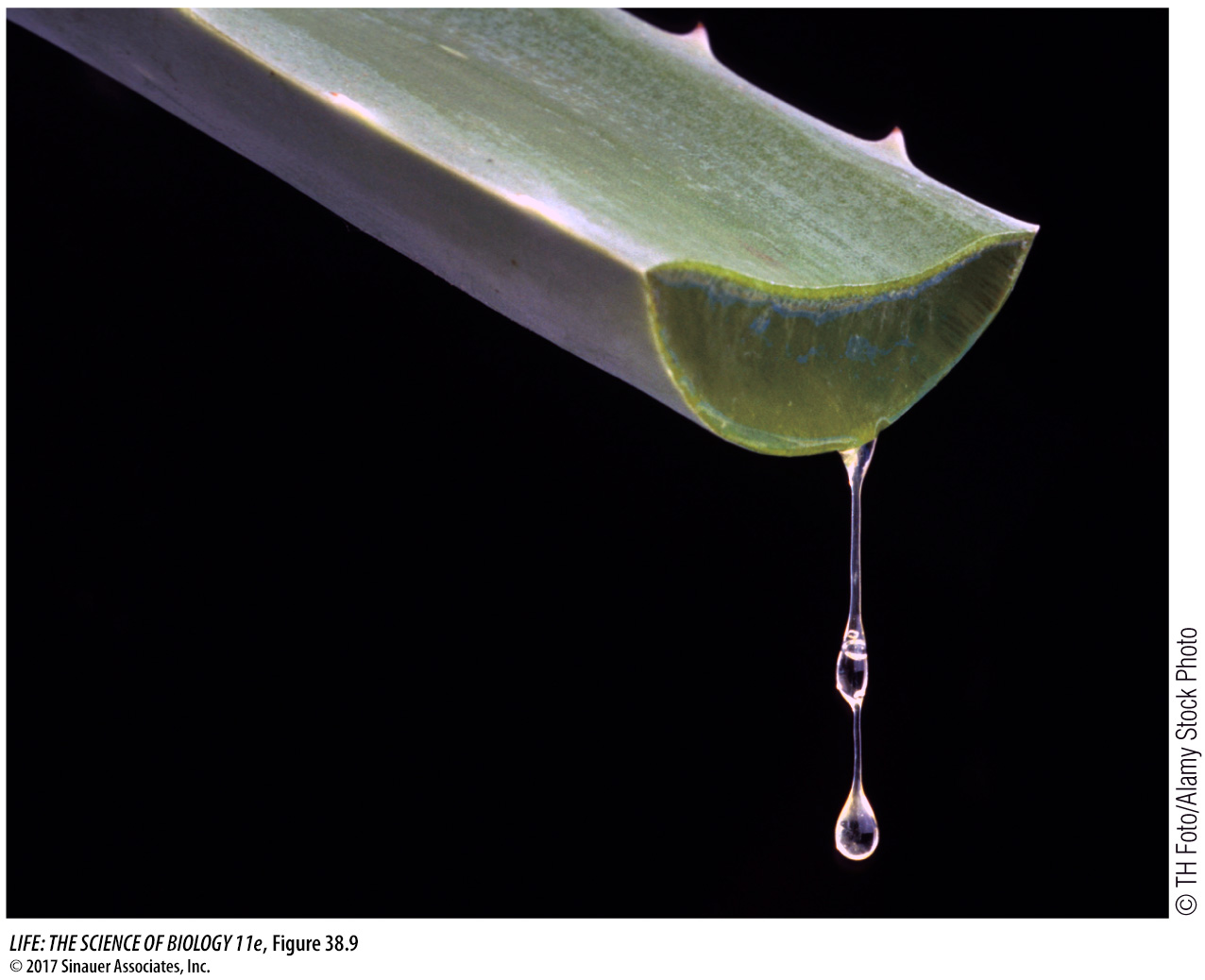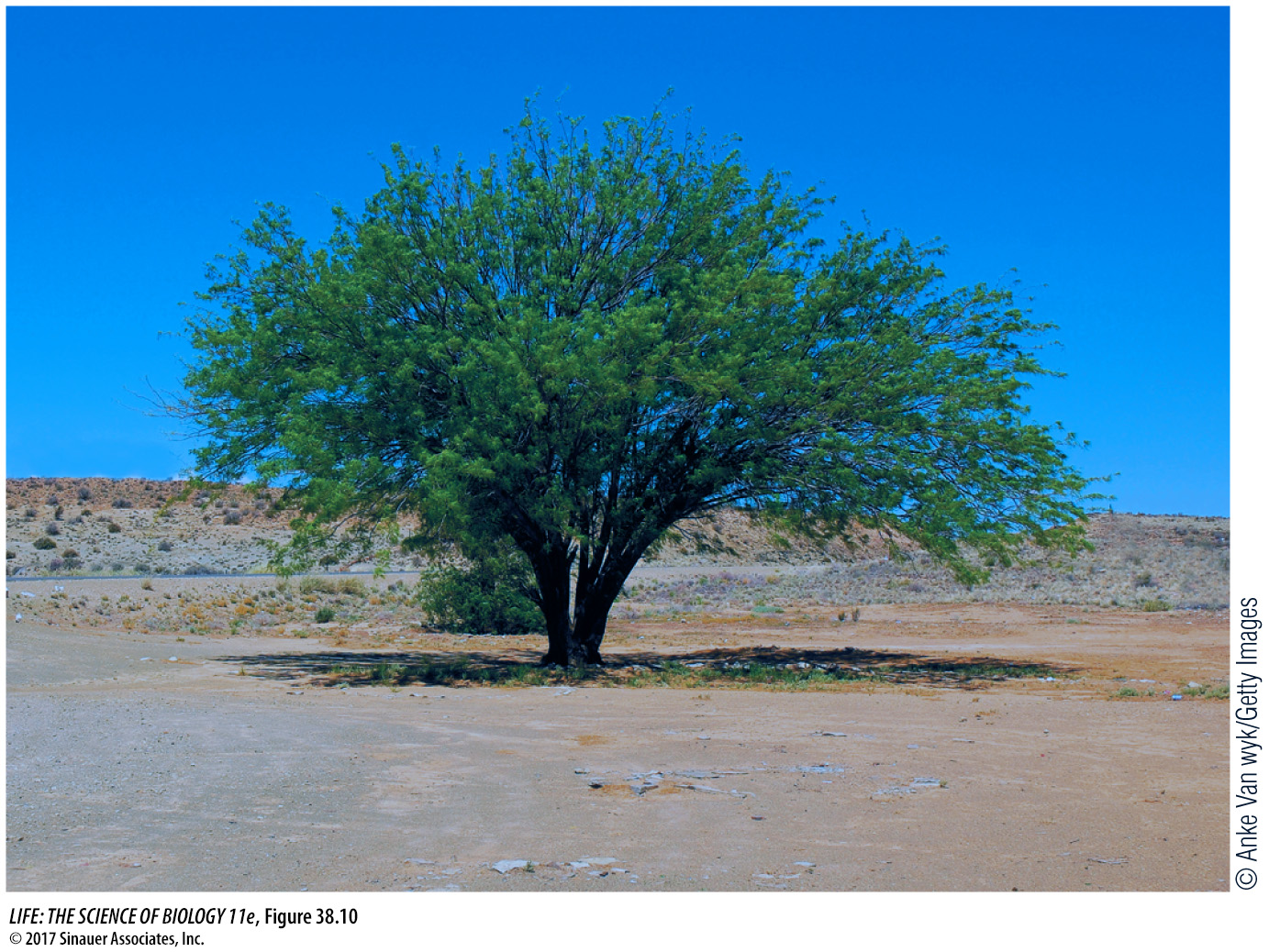Plants can adapt to dry conditions
Many plants, especially those living in deserts, must cope with extremely limited water supplies. A variety of anatomical and life-cycle adaptations allow plants to survive under these conditions. Many of these adaptations are ways to avoid, reduce, or cope with the inevitable water loss through transpiration that occurs during active photosynthesis. Other adaptations help plants tolerate the excessive light and heat that are often found in deserts.
DROUGHT AVOIDERS Some desert plants have no special structural adaptations for water conservation. Instead, these desert annuals, called drought avoiders, simply evade periods of drought. Drought avoiders carry out their entire life cycle—from seed to seed—during a brief period in which rainfall has made the surrounding desert soil sufficiently moist for growth and reproduction (Figure 38.7). A different drought avoidance strategy is seen in some African and South American deciduous perennial plants, which shed their leaves in response to drought as a way to conserve water. These plants remain dormant until conditions are again favorable for growth, much as deciduous trees in temperate climates shed their leaves in fall and are dormant until the following spring.

Figure 38.7 Desert Annuals Avoid Drought The seeds of many desert annuals lie dormant for long periods, awaiting conditions appropriate for germination. When they do receive enough moisture to germinate, they grow and reproduce rapidly before the short wet season ends. During the long dry spells, only dormant seeds remain alive.
LEAF STRUCTURES Most desert plants are not drought avoiders, but rather grow in their dry environment year-round. Plants adapted to dry environments are called xerophytes (Greek xeros, “dry”). Three structural adaptations are found in the leaves of many xerophytes:
Page 816
Specialized leaf anatomy that reduces water loss
A thick cuticle and a profusion of hairs over the leaf epidermis, which retard water loss
Trichomes that diffract and diffuse sunlight, thereby decreasing the intensity of light impinging on the leaves and the risk of damage to the photosynthetic apparatus by excess light
In some xerophytes the stomata are strategically located in sunken cavities below the leaf surface (known as stomatal crypts), where they are sheltered from the drying effects of air currents (Figure 38.8). Trichomes surrounding the stomata slow air currents further. Cacti and similar plants have spines rather than typical leaves, and photosynthesis is confined to the fleshy stems. The spines may help the plants cope with desert conditions by reducing leaf surface area and therefore, water loss. The spines may also deter herbivores.

Figure 38.8 Stomatal Crypts Stomata in the leaves of some xerophytes are located in sunken cavities called stomatal crypts. The trichomes (hairs) covering these crypts trap moist air. Note also the thick cuticle that prevents water loss.
WATER-STORING STRUCTURES Succulence—the possession of fleshy, water-storing leaves or stems—is another adaptation to dry environments (Figure 38.9). This adaptation allows plants to take up large amounts of water when it is available (such as after a brief thunderstorm) and then draw on the stored water during subsequent dry periods. Other adaptations of succulents include a reduced number of stomata and a variant form of photosynthesis (the CAM pathway; see Key Concept 10.4), both of which reduce water loss.

Figure 38.9 Succulence The Aloe plant stores water in its fleshy leaves.
ROOT SYSTEMS THAT MAXIMIZE WATER UPTAKE Roots may also be adapted to dry environments. Cacti have shallow but extensive fibrous root systems that effectively intercept water at the soil surface following even light rains. Mesquite (Prosopis) (Figure 38.10) obtains water through taproots that grow to great depths, reaching water supplies far underground, as well as from condensation on its leaves.

Figure 38.10 Mining Water with Deep Taproots In Death Valley, California, the root of this mesquite tree must reach far beneath the dunes for its water supply.
SOLUTE ACCUMULATION Xerophytes and other plants that must cope with inadequate water supplies may accumulate high concentrations of the amino acid proline or of secondary metabolites in their vacuoles. This solute accumulation lowers the water potential in the plant’s cells below that of the soil, which allows the plant to take up water via osmosis. Plants living in saline environments share this and several other adaptations with xerophytes, as you will see shortly.



